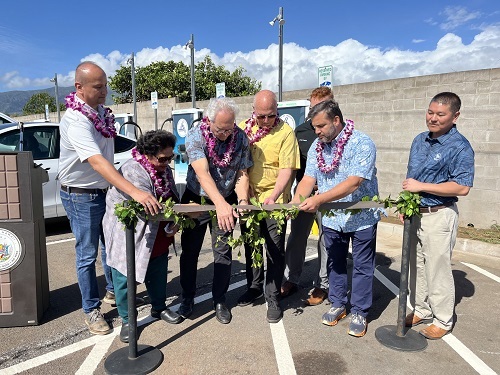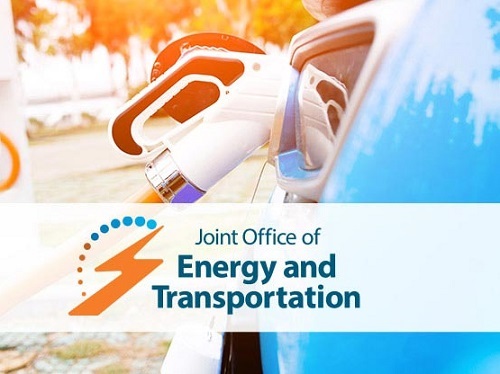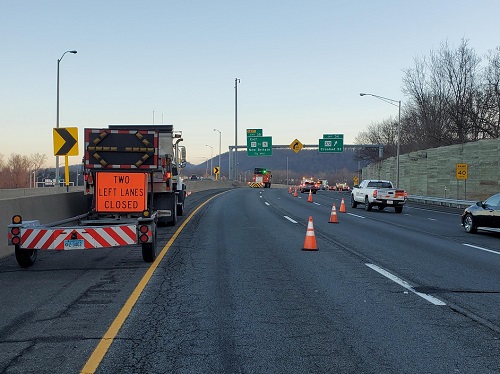The Hawaii Department of Transportation officially opened its first electric vehicle or EV charging station partially funded by the National Electric Vehicle Infrastructure or NEVI program on February 28.
[Above photo by Hawaii DOT]
The EV charging station at the Kahului Park & Ride on Maui consists of four 150 kW DC fast chargers with Combined Charging System and CHArge de MOve ports. The station – located along Route 380, also known as the Kuihelani Highway – cost $3 million to design and build, with $2.4 million coming from the NEVI program and $600,000 from the state’s highway fund.
“Providing drivers with the opportunity to choose alternatives to vehicles with traditional internal combustion engines is a critical part of the strategy to get Hawaii to a clean energy portfolio by 2045,” said Ed Sniffen, director of the Hawaii DOT, in a statement.
“When we began planning our department’s conversion to EVs we calculated an estimated annual reduction in CO2 (carbon dioxide) emissions of 8,700 pounds per vehicle, which is roughly the amount of energy used by an average American home in half a year,” he added.
[Editor’s note: In June 2023, Hawaii DOT deployed the state’s very first autonomous all-electric passenger shuttle bus. Developed in collaboration with the University of Hawaii at Mānoa, the AV Star All-Electric Autonomous Min-E Bus is an Americans with Disabilities Act-compliant vehicle that can hold 14 passengers or 10 passengers and two passengers in wheelchairs. The vehicle is also equipped with the Perrone Robotics “TONY” system – short for “To Navigate to You” – autonomous system that Perrone said meets all Federal Motor Vehicle Safety Standards.]
To qualify for NEVI funding, EV charging stations must meet criteria such as having EV charging publicly available 24/7 and being no more than one mile away from the nearest U.S. Department of Transportation-designated Alternative Fuel Corridor.
The Kahului Park & Ride along Kuihelani Highway was selected as the state’s first NEVI-funded EV charging site because it is accessible 24/7 and its location is adjacent to the Maui Alternative Fuel Corridors, the Hawaii DOT noted.
The agency added that EV charging will be free to the public at this location through March 10, as time-of-use rates are being finalized. Payment and charger availability can be checked through the EV Connect App at evconnect.com/ at that time, with payment via credit card also accepted at this EV charging locale, Hawaii DOT added.







